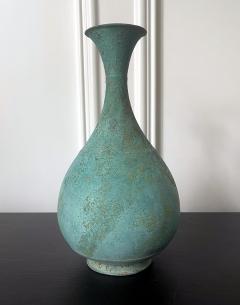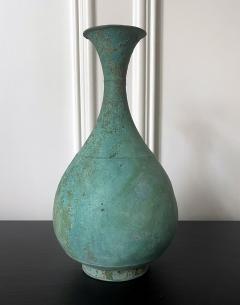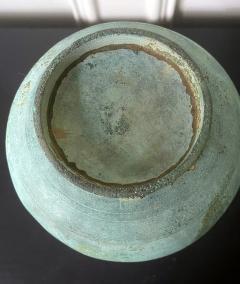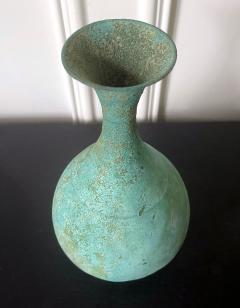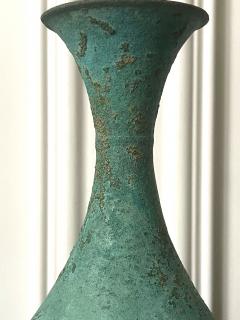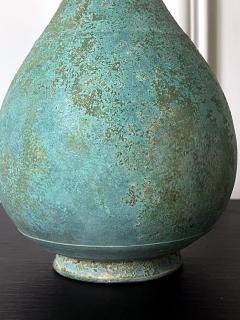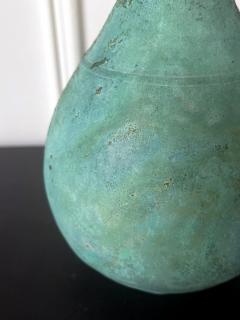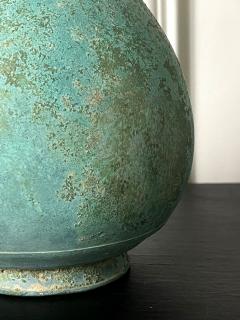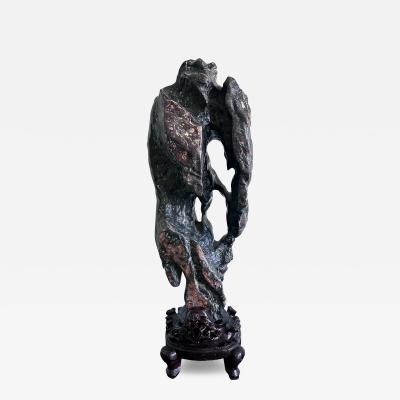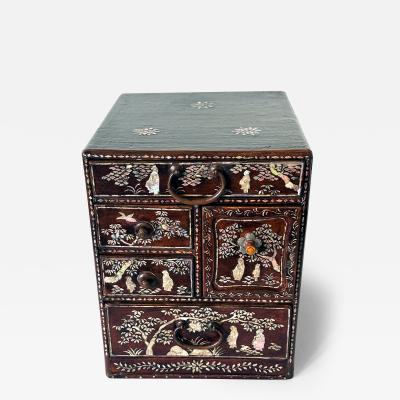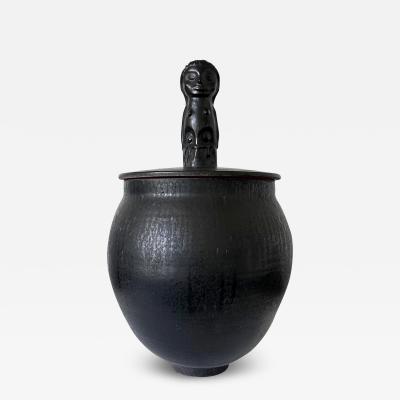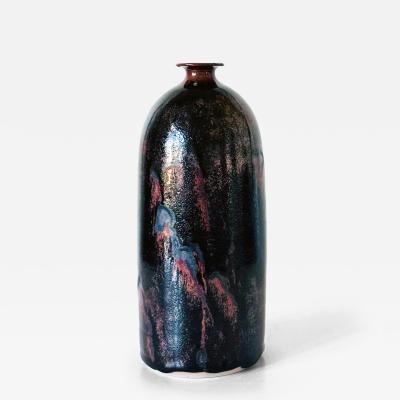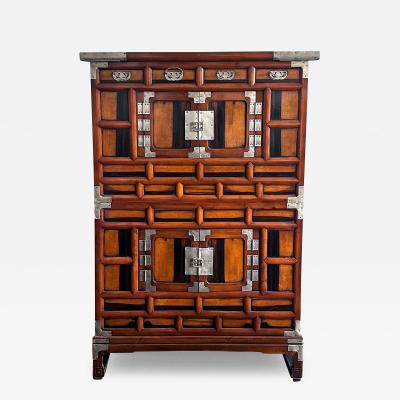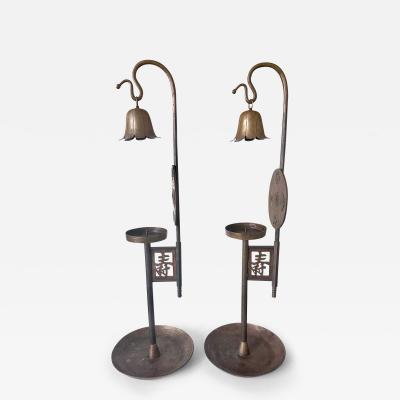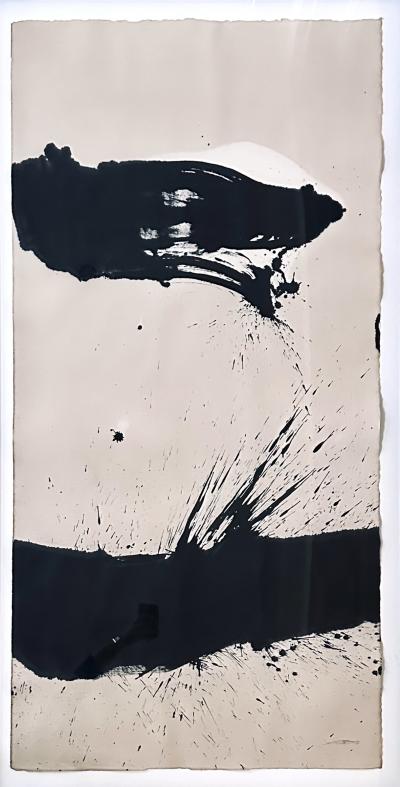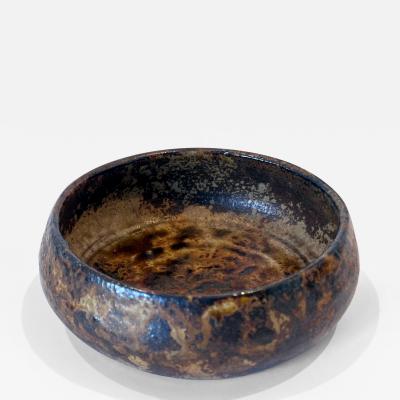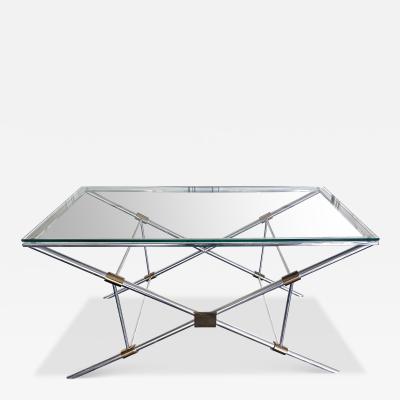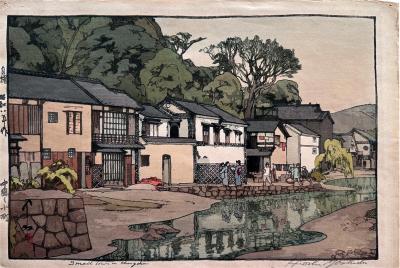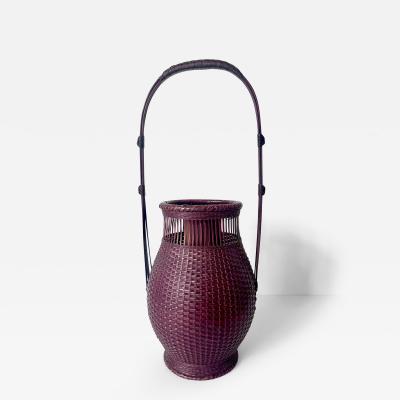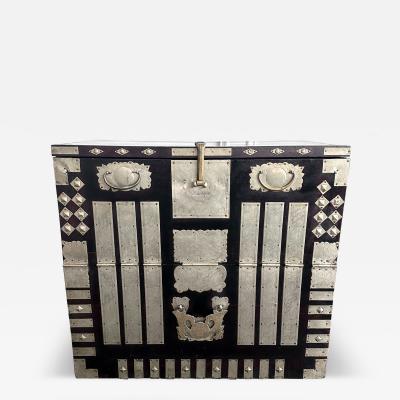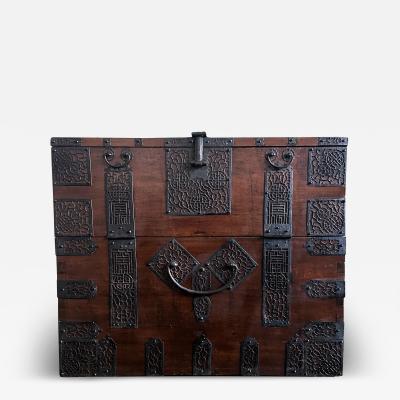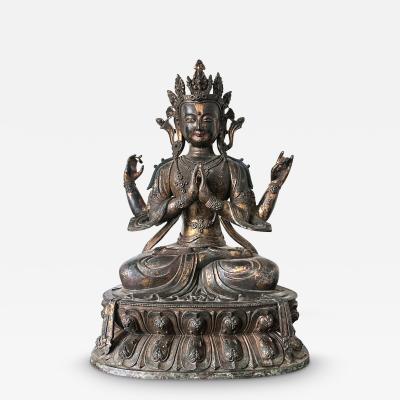- FINE ART
-
FURNITURE + LIGHTING
Shop By Category
Shop By Artist
- NEW + CUSTOM
- DECORATIVE ARTS
-
JEWELRY
Shop By Category
Shop By Artist
- INTERIORS
- MAGAZINE
Showrooms
Korean Bronze Bottle Goryeo Dynasty
$ 3,800
-
Tear Sheet Print
- Save
- BoardAdd to Board
-
-
Description
An antique Korean bronze bottle of bulbous pear form with a long neck and flared open mouth from Goryeo Dynasty (918 AD-1392 AD) circa 12-13th century It was thought that the type of bottle with such harmonious form and proportion was inspired from the Chinese porcelain prototype "Yu Hu Chun" (Jade Jar Spring) and were commonly found among mortuary objects in the tomb of Goryeo period. Theory is divided in terms of their use. One school thinks they were exclusively used in ritual setting such as flower offering vases in Buddhist temple. The other school thinks they also serve some secular purposes. The metal analysis of these types of bottles shows significant content of lead, which suggests that they were probably not used for culinary functions.
The bottle is striking in its minimalistic elegant form. Its surface is most unadorned othering than two decorative circumventing lines under its neck and above the base. The base was cast separately, and the joins shows expected corrosion consistent with the making process. What is really visually striking is the deep green-bluish encrusted patina that has developed due to the prolonged exposure to earth elements in the ground. That renders the piece a very attractive and archaistic appeal.
For reference of analysis of these bottles, see page 108 of "Korean Art and Design" by Beth McKillop.
For a similar bottle in the collection of Brooklyn Musuem no. 74.159.2; Portland Art Musuem no. 2016.118.1 -
More Information
Origin: South Korea Period: Pre 18th Century Materials: bronze Condition: Good. Scatter areas of professional restoration to dings, hardly discernible. No in paint appears under UV. Wear consistent with age and use. Heavy encrusted patina covering the whole surface. Creation Date: 12-13th century Styles / Movements: Asian, Traditional Patterns: Asian/Oriental, Geometric, Handmade Incollect Reference #: 578765 -
Dimensions
H. 12 in; Diam. 7 in; H. 30.48 cm; Diam. 17.78 cm;
Message from Seller:
Tishu, based in Atlanta, GA, offers a diverse collection ranging from Neolithic art to 20th-century collectibles, with a focus on Mid-century design, Japanese and Korean art, Asian textiles, and Contemporary Aboriginal art. Driven by a passion for timeless beauty, the gallery is open by appointment only and offers works that span 5,000 years of history. Reach them at 305-400-0561 or tishu@tishugallery.com.
Sign In To View Price
close
You must Sign In to your account to view the price. If you don’t have an account, please Create an Account below.
More Listings from Tishu View all 1003 listings
No Listings to show.
- Large and Fine Chinese Scholar Rock Lingbi Stone on Display Stand
- Antique Korean Mother of Pearl Inlay Lacquer Accessory Chest Joseon Dynasty
- Large Early Glazed and Sculpted Ceramic Vessel by Mary and Edwin Scheier
- Early Ceramic Vase with Honan Glaze by Brother Thomas Bezanson
- Korean Two-Level Stacking Chests with Mirrored Persimmon Wood Panels
- Matching Pair of Korean Brass Candlesticks with Shields and Snuffers Joseon
- Large Framed Abstract Ink Painting by Qin Feng
- Japanese Glazed Stoneware Bowl by Kitaoji Rosanjin Ex-Musuem
- Rare Console Sofa Table by John Vesey
- Japanese Woodblock Print Yoshida Hiroshi Small Town in China
- Japanese Woven Bamboo Ikebana Basket by Chikusei Watanabe
- Antique Korean Bandaji Chest Pyongyang Province Joseon Dynasty
- Rare Korean Pyongyang Do Bandaji Chest Joseon Dynasty
- Large Gilt Bronze Statue of Bodhisattva Avalokiteshvara with Four Arms


















